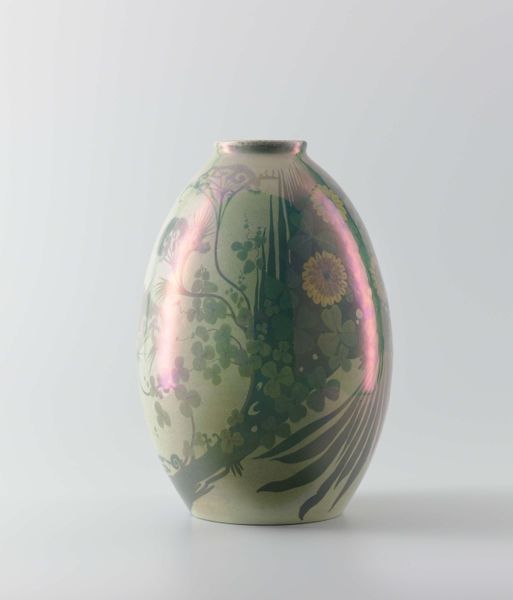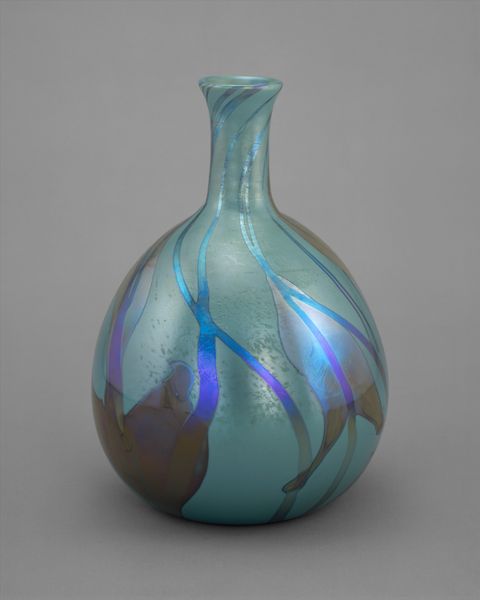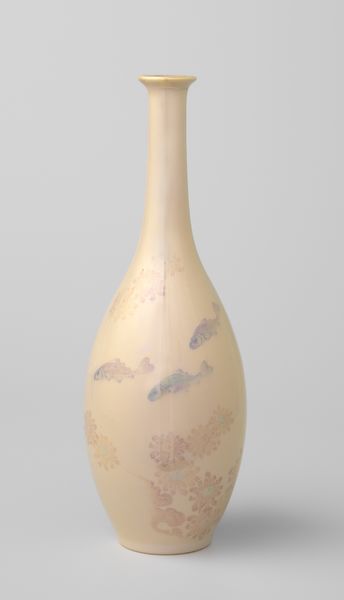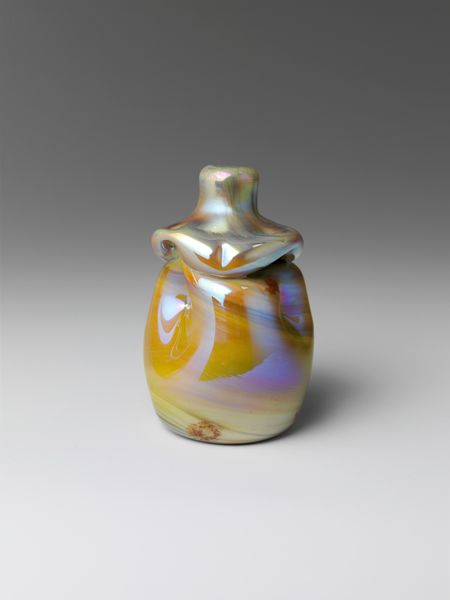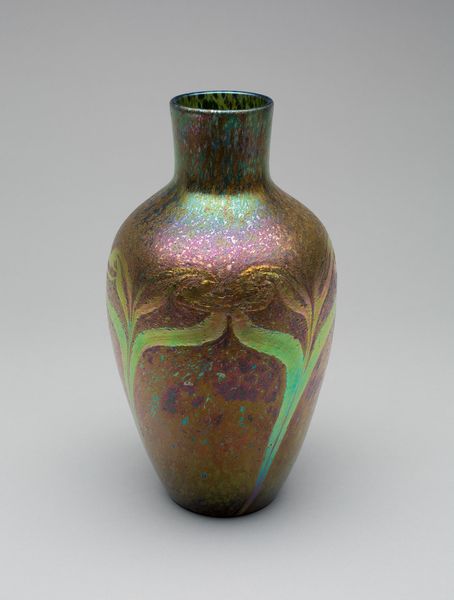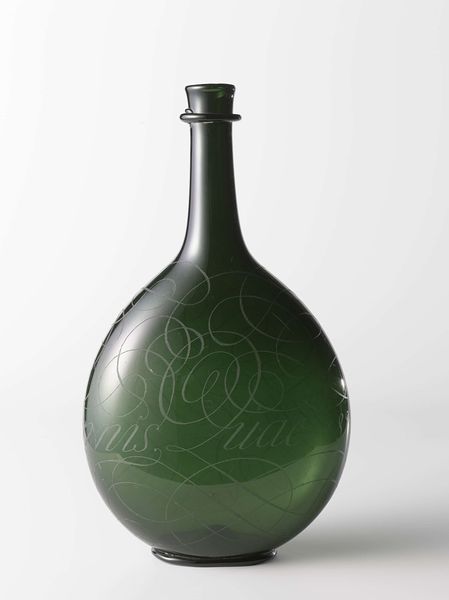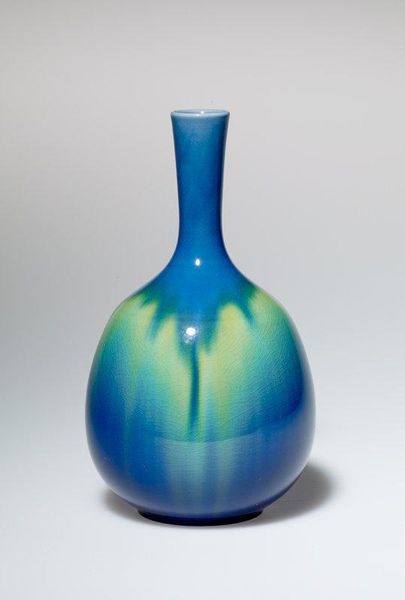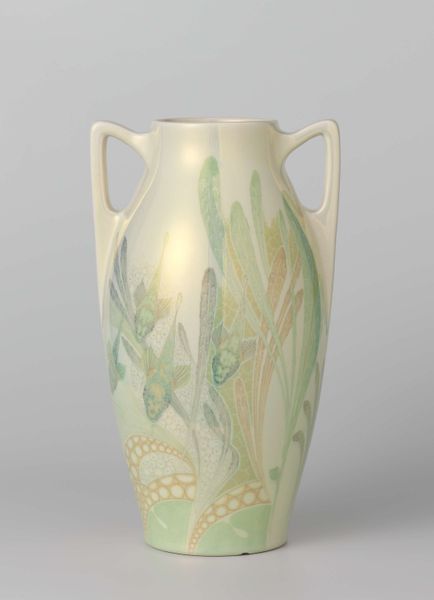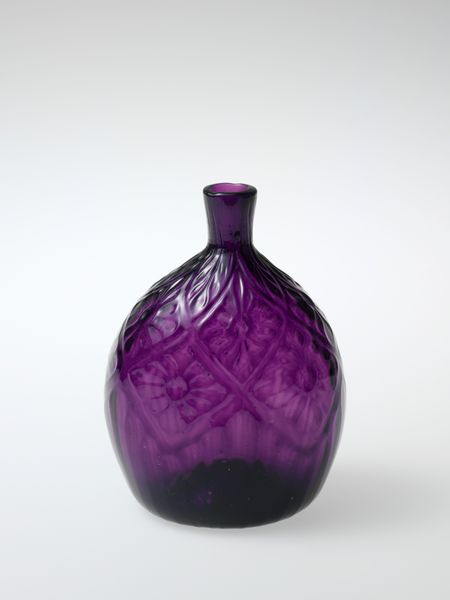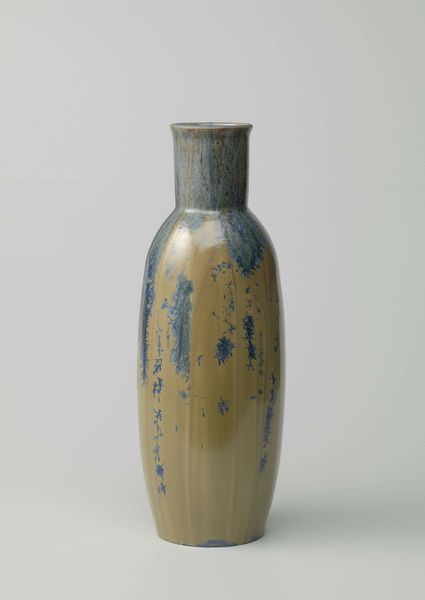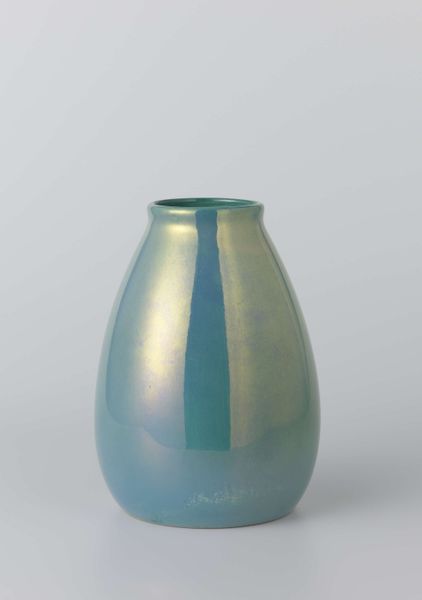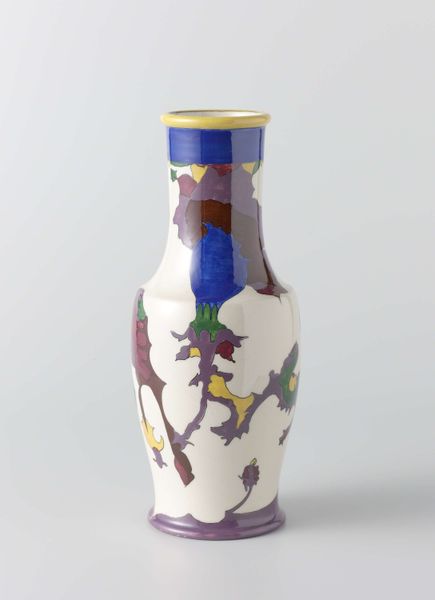
ceramic
#
art-nouveau
#
ceramic
#
ceramic
#
decorative-art
Dimensions: height 32.7 cm, diameter 17 cm
Copyright: Rijks Museum: Open Domain
Editor: So, this is a ceramic vase made around 1904-1907 by Plateelbakkerij Haga, titled "Vase, Painted with Fish, Plants and Weeds." It's beautiful, the shimmery surface and muted colours create a calming impression. How should we look at it? Curator: We can appreciate this vase by examining the means of production, right? How the material itself – the ceramic – is manipulated and transformed through labor into a coveted object. This object blurs the line between high art and craft, doesn’t it? The painted decoration doesn't exist in a vacuum either. The subject matter of marine life asks questions about the consumption habits of that era. Are these sustainably sourced? Are the fish themselves commodities, being literally consumed and figuratively displayed on the surface of the vase? Editor: I see. It's not just decoration then. You are highlighting a dialogue on sustainability or responsible resource use. But how does this technique fit within Art Nouveau? Curator: Excellent point. Art Nouveau was, in some ways, a revolt against industrial mass production, valuing handcraftsmanship. This vase reflects that spirit, though it must have been produced on a significant scale if the company still exists today! I would argue that the shimmery, iridescent glaze connects it with trends of commercial experimentation that would make products of value during the post industrial period. By using a new ceramic technique it allows its value to extend far beyond functionality, into the sphere of beauty. Editor: So, it's like the vase questions the very nature of craft versus mass production and sustainability, right there on its surface. I guess I expected to think only about art for art's sake! Curator: Precisely! We tend to think the value and beauty exists by accident, forgetting these forms also become imbued by consumerism as well as industrial processes. Understanding that gives us greater understanding, wouldn't you agree? Editor: Definitely. I'll never look at a pretty vase the same way again.
Comments
No comments
Be the first to comment and join the conversation on the ultimate creative platform.
